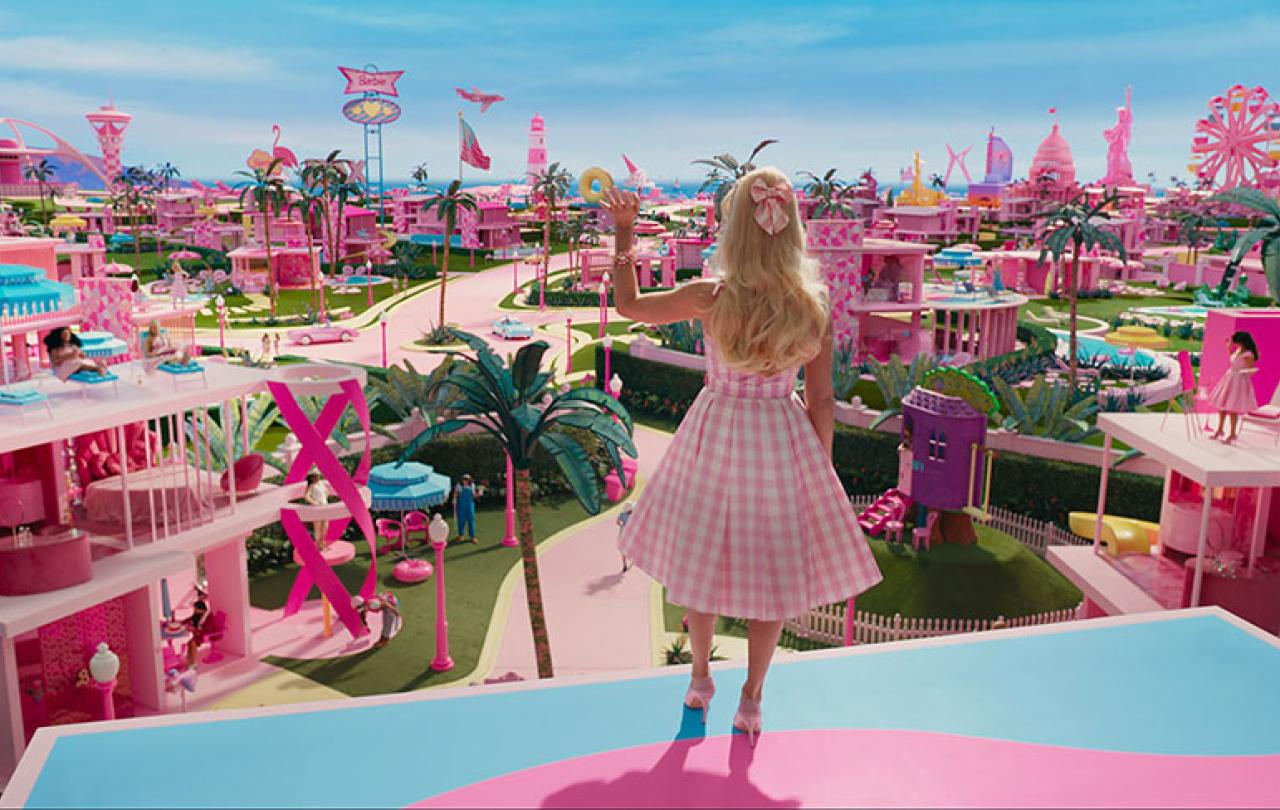
I urge you to take the Barbie movie completely seriously - the film itself, the press-tour, the reactions and reviews, the watch-parties, the soundtrack, the costumes. All of it.
This is not a film to be shrugged at. Love it or hate it, Greta Gerwig’s re-imagining of the Barbie universe is a tool with which we can read this cultural moment. This film, fronted by Margot Robbie and Ryan Gosling (to name just two of an astonishingly expansive A-list cast), is already something of a cultural artefact in that it binds together decades worth of individual memories and experiences with a toy whose impact is truly unfathomable. These micro-stories have fed into what is now a macro-narrative. In binding together such experiences, the Barbie movie will attempt to speak into what has been, what is, and what may be.
You may think that I am being dramatic, but if you’re unaware of the term ‘Barbenheimer’, then I’m afraid that culture is already speaking a language that you’re unfamiliar with. While it's hard to know how this film will age, it's not hard to see how it is a real moment. One that should be given our full attention.
As Lauren Windle has provided a masterful analysis of the movie itself, this article will turn its attention to Billie Eilish’s hauntingly good musical accompaniment.
What is particularly interesting to explore, is who Billie is asking this question on behalf of, and who she’s asking it to.
Anticipation has been building as certain songs have mysteriously been left off the movie soundtrack’s track list: what are these mystery songs? Who is giving them to us? Why are they being kept hidden?
Rumours began to swirl, the most traction being given to the theory that Billie Eilish, the 21-year-old musical prodigy, had something particularly special up her sleeve. And the rumours were right. A week before Barbie’s release date, Eilish released What Was I Made For?, a song written just for this movie. And perhaps, just for this moment. The last time Billie turned her hand to writing a song for a film, she wrote an Oscar-winning anthem for James Bond, so this Barbie offering was always going to be special.
This song, written with her older brother (Finneas) in their childhood home, has already been streamed around twenty-million times. We can therefore assume that it is already residing in Gen-Z’s public consciousness. Simplicity seems to have been the key choice when it came to the production of this ballad; aside from a soft piano accompaniment and a hint of harp in the middle, Billie’s vocals have nothing to hide behind. In fact, her clean and soft voice sounds as though it reaches out of the song, the echo and layered harmonies giving it a truly 3D feel.
The result is ethereal.
But this song is more than beautiful. It is more than its (wonderous) sound. The lyrics are, quite literally, haunting. The title of the song is also the question that ties it together, as repeatedly Billie asks the question: ‘what was I made for?’ This question, and its implications, is where this song becomes more than a song. As so many of the great ones do, it becomes a three-minute-long existential pondering. What is particularly interesting to explore, is who Billie is asking this question on behalf of, and who she’s asking it to.
Of course, this song was written for the purpose of featuring in a film, its primary job being to tell the same story as the film itself (or at least an aspect of it).
Over a billion Barbie dolls have been sold since 1959. Over the years, Barbie has had over 250 professions, she has evolved through the decades to best personify the evolving beauty ideals of the age, she is, to quote herself, everything. But in being everything, is she also nothing? Time recently wrote that:
‘Barbie has no inner life or purpose; children are supposed to project their hopes and dreams onto her blank canvas.’
Considering this, it’s obvious how lines such as -
‘Takin' a drive, I was an ideal. Looked so alive, turns out I'm not real, just something you paid for. What was I made for?’
– hit the brief perfectly. If the song was intended to be a seeking out of Barbie’s more fragile side, it is a job tremendously well done.
But there’s more to it.
Billie Eilish has been under culture’s magnifying glass since she was fifteen years old. Many of her most formative years have been spent in our gaze as she’s become an adult in front of our very eyes. Whether it’s been the ever-changing colour of her hair, the romanticism of her homegrown talent, the fact that her sense of style so satisfyingly defies all the rules of the moment, or that her voice is so delicate it almost feels as though it needs protecting, she’s had us utterly captivated. And of course, such captivation has taken quite the toll. It always does.
Taking a moment to imagine how the world looks from Billie’s viewpoint, it becomes obvious that a song which was written for a toy is also profoundly autobiographical. She too is an ideal, she is something we’ve paid for. Through writing this song, Billie offered us her profound vulnerability. And what’s fascinating is that she did so without even realising it. When speaking about the song, Billie recalls how,
‘I was purely inspired by this movie and this character, and the way I thought she would feel, and I wrote about that. And then, over the next couple of days, I was listening… and I do this thing where I’m writing for myself, and I don’t even know it… this is exactly how I feel, and I didn’t even mean to be singing it.’
So, this song has two profound levels to it. And yet, I can’t help but feel as if it has even more to offer. The chances are that neither you nor I are a twenty-one-year-old mega-star, and we’re certainly not a sixty-four-year-old doll, but I wonder if this song was written about us too.
It hints at a belief that she was made with some kind of purpose and intentionality weaved into her existence.
This cultural moment is asking a pertinent question, it’s certainly not a new one, in fact, I would guess that it’s as old as time itself. But every now and again it is as if the volume gets turned up and this question rings out above all others: what does it mean to be human? Or, to borrow Billie’s phrasing: what were we made for?
The interesting, albeit obvious, thing about Billie’s particular wording, is that it implies a kind of faith that is hidden in plain sight (for, as far as I know, Billie has no religious faith). It hints at a belief that she was made with some kind of purpose and intentionality weaved into her existence. This is one of the most faith-filled things one could think, and naturally, Christians would heartily agree. Of course, it’s perfectly possible that this is simply emotive wording that Billie has crafted, for the sole purpose of getting people to listen to her song. However, I would argue that this question is asked all day every day, by people who have an intuition that there is more to their presence in the here and now than mere chance. And I’m willing to bet that the Barbie movie is going to have a lot to say about it.
Are we in a cultural moment where we’re wanting to re-find our humanity in its truest form? So much so, that we’re willing to shirk falsehoods, pretences, and presumptions? Are we disillusioned by anything less than our most authentic selves? It is interesting to ponder where such questions are prompting us to look for answers: inward? Outward? Upward, even?
What Was I Made For? is a soundtrack for a movie, a particularly interesting movie at that. But I would suggest that it’s also the soundtrack of an existential yearning, a song of a human working out what it means to be such. And I suppose that makes it a song that tells our story, as well as Barbie and Billie’s.





